Apple developing activity monitor for skiers, snowboarders, bikers
"It is well known that many skiers enjoy high speeds and jumping motions while traveling down the slope. High speeds refer to the greater and greater velocities which skiers attempt in navigating the slope successfully (and sometimes unsuccessfully)," Apple wrote in a new patent filing discovered by AppleInsider this week. "The jumping motions, on the other hand, include movements which loft the skier into the air. Generally, the greater the skier's speed, the higher the skier's loft into the air."
The Cupertino-based electronics maker further notes that the interest in high speed skiing is apparent simply by observing the velocity of skiers descending the mountain. Meanwhile, interest in the loft motion is less apparent, though it is known that certain enthusiastic skiers regularly exclaim "let's catch some air" and other assorted remarks when referring to the amount and altitude of the lofting motion.
"The sensations of speed and jumping are also readily achieved in other sporting activities, such as in mountain biking. Many mountain bikers, like the aforementioned skiers, also crave greater speeds and "air" time," Apple wrote. "However, persons in such sporting activities typically only have a qualitative sense as to speed and loft or 'air' time. For example, a typical snowboarding person might regularly exclaim after a jump that she 'caught' some 'big sky,' 'big air' or 'phat air' without ever quantitatively knowing how much time really elapsed in the air."
There are also other factors that extreme sportsmen sometimes assess qualitatively. For example, if a snowboarder goes down a double-diamond ski slope while a friend goes down a green, easy slope, when they both reach the bottom, the double-diamond snowboarder will have expended more energy than the other, generally, and will have worked up a sweat; while the green snowboarder will have had a relatively inactive ride down the slope. Currently, there is no method or system to quantitatively compare how rough their journeys were relative to one another.
This is where Apple is looking to step in with a device — or series of devices — capable of detecting and displaying a visual and quantitative measure of how much "air" time and, in certain aspects, how fast a user moves in a particular activity.
"A loft sensor senses a first condition that is indicative of the vehicle leaving the surface, and further senses a second condition indicative of the vehicle returning to the surface," the filing explains. "A microprocessor subsystem, e.g., a microcontroller, determines a loft time that is based upon the first and second conditions, and the loft time is thereafter displayed to a user of the apparatus by a display, e.g., a LCD or LED display."
Preferably, Apple says that a power module such as a battery would be included in the apparatus to power the several components. In addition, a housing would connect and protect the microprocessor subsystem and the user interface while it records data such as: loft time; a speed of the vehicle; a peak loft time; an average loft time; a total loft time; a dead time; a real activity time; an average speed; an indication that loft time is being displayed; an indication that speed is being displayed; an indication that dead time is being displayed; an indication that real activity time is being displayed; successive records of loft information; successive records of speed information; a distance traveled by the vehicle; a height achieved by the vehicle off of the surface; and an indication of a number of a successive record relative to all successive records.
Apple adds that, "In still another aspect, the invention includes a user interface for providing external inputs to the apparatus, including one or more of the following: a start/stop button for selectively starting and stopping the acquisition of data by the apparatus; a display-operate button for activating the display means selectively; a speed/loft toggle button for alternatively commanding a display of loft time information and speed information of the vehicle; means for commanding a display of successive records of loft time information selectively; means for commanding a display of successive records of speed information selectively; means for commanding a display of information corresponding to average loft time; means for commanding a display of information corresponding to average speed; means for commanding a display of total loft time; means for commanding a display of dead time; means for commanding a display of distance traveled by the vehicle; means for commanding a display of height achieved by the vehicle off of the surface; and means for commanding a display of real activity time."
Alternatively, or additionally, the loft sensor could be constructed with one of the following technologies: an accelerometer that senses a vibrational spectrum; a microphone assembly that senses a noise spectrum; a switch that is responsive to a weight of a user of the vehicle; a voltage-resistance sensor that generates a voltage indicative of a speed of the vehicle; and a plurality of accelerometers connected for evaluating a speed of the vehicle.
"The invention also provides, in another aspect, means for storing information including look-up tables with pitch-to-speed conversions for a plurality of vehicles," Apple says. "This is useful because different vehicles have different associated noise and/or sound spectrums associated with the vehicle. Accordingly, the invention in this aspect includes memory for storing the respective calibration information of the different vehicles (typically in a look-up table format) so that a user can utilize the invention on different vehicles and still determine speed accurately. Specifically, a particular pitch is associated with a particular speed for a particular vehicle; and that association is selectively made by the user."
The filing also talks at length about the significant usefulness in measuring power and comparing how strenuous one user is to another:
For example, suppose two users ski only blue, intermediate slopes with the exact same skill and aggressiveness except that one user chooses to sit in the bar for three hours having a couple of cocktails. At the end of an eight hour day— providing the power sensor is activated for the whole day— the skier who skied all eight hours will have a power measurement that is 8/5 that of his cocktail-drinking companion. They can thereafter quantitatively talk about how easy or how difficult their ski day was. As for another example, suppose a third friend skis only double-diamond slopes and he takes four hours out to drink beer. At the end of the day, his power measure may still be greater than his friends depending upon how hard he skied during his active time. He could therefore boast— with quantitative power data to back him up— that he had more exercise than either of his friends even though he was drinking half the day.
The 41-page patent filing dated just four months ago is credited three remotely located Apple engineers: Curtis Vock of Boulder, Colo., Peter Flentov of Carlisle, Mass., and Dennis Darcy of Dracut, Mass.
 Sam Oliver
Sam Oliver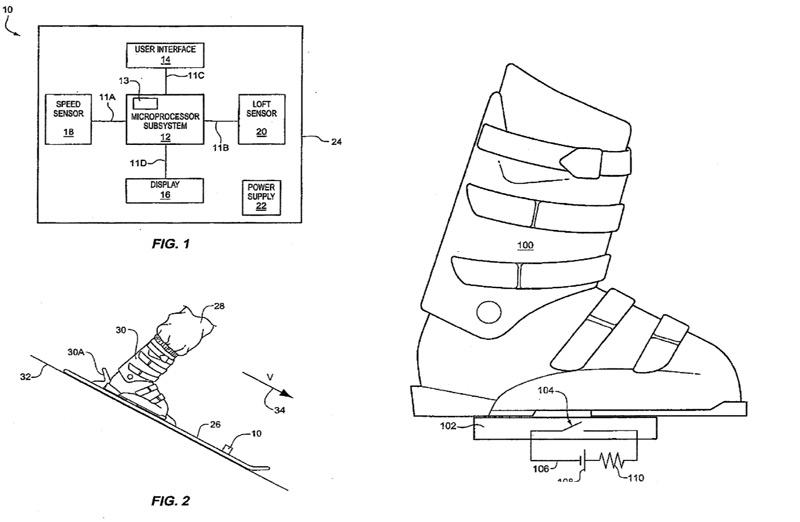
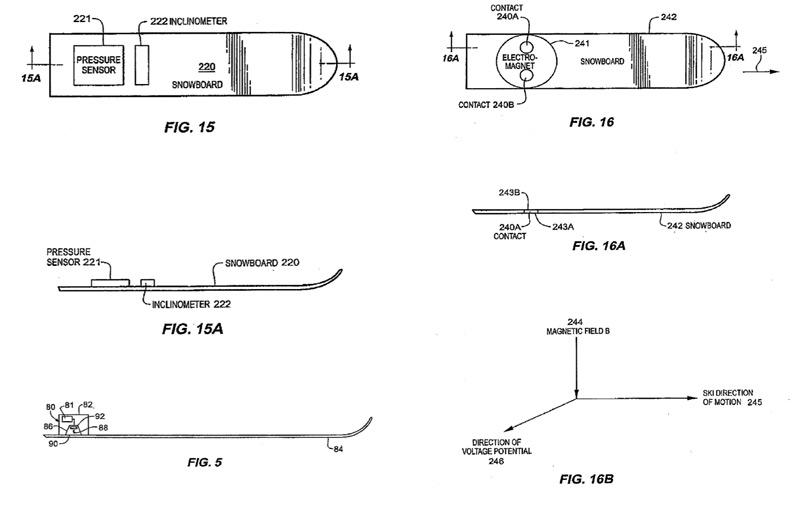
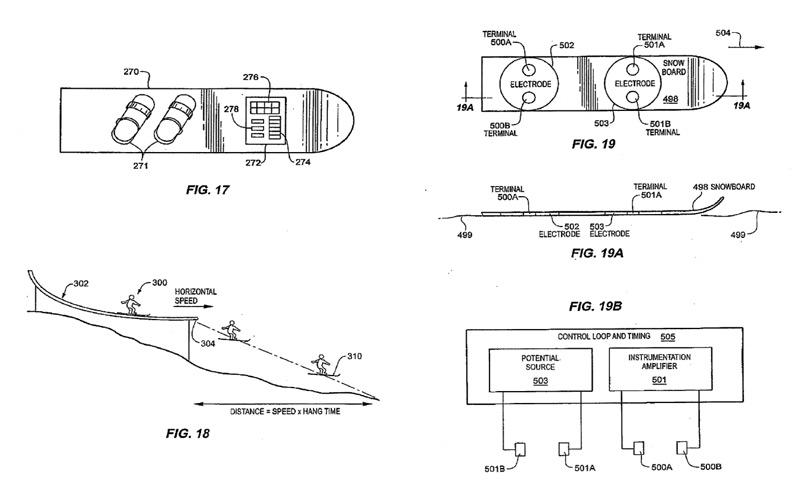
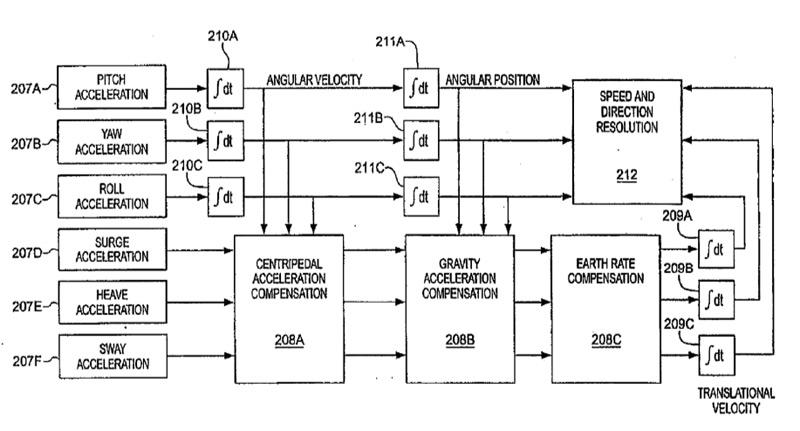














 Amber Neely
Amber Neely
 Thomas Sibilly
Thomas Sibilly
 AppleInsider Staff
AppleInsider Staff
 William Gallagher
William Gallagher
 Malcolm Owen
Malcolm Owen
 Christine McKee
Christine McKee

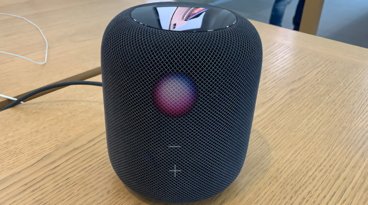







23 Comments
Is that an Apple hoverboard in one of the drawings??
I have nothing useful to add, I just want to snigger at the shape of the snowboard
I would seriously be the first in line to buy this thing.
This is such a niche market I don't think they will put this to market....unless they license it to a 3rd party.
"For example, a typical snowboarding person might regularly exclaim after a jump that she 'caught' some 'big sky,' 'big air' or 'phat air' without ever quantitatively knowing how much time really elapsed in the air."
Haha - I love it. Standing back and objectively analysing observations of people saying 'phat air.' Very neo-victorian.